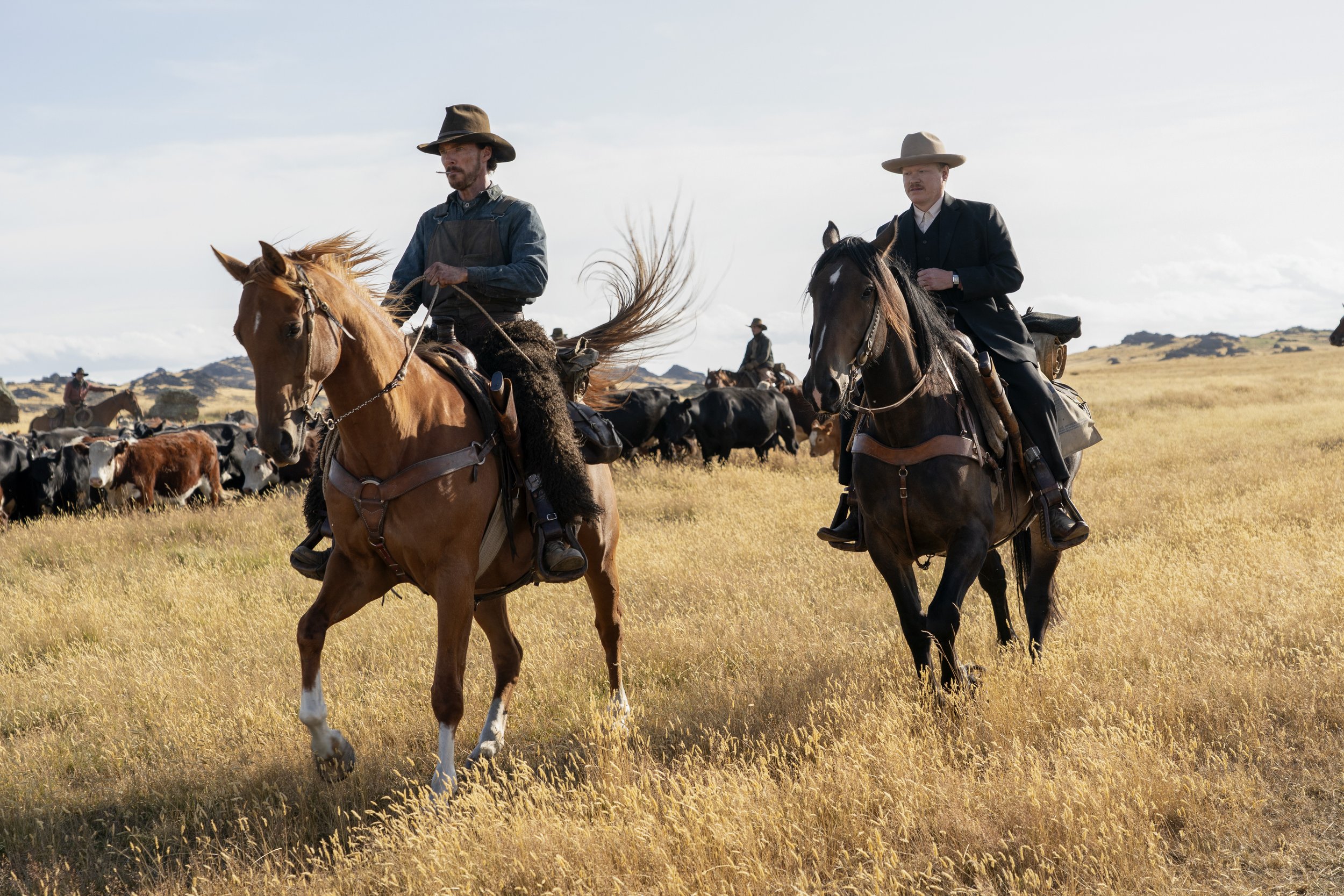Review: Jane Campion returns with a bleak, gorgeous and emotionally riveting 'Power of the Dog'
Director/screenwriter Jane Campion’s first feature film in more than a decade, “The Power of the Dog,” is a shatteringly beautiful return to form, a prickly tale of strained family bonds in the not-so-old West.
Campion’s adaptation of Thomas Savage’s acclaimed 1967 novel starts in Montana in 1925, just as the automobile and other refinements of “civilization” are starting to insert themselves in the rough-and-tumble frontier. The story centers on the Burbank brothers, who run the area’s most prosperous ranch.
The brothers are a study in contrasts: Older brother Phil (Benedict Cumberbatch) is gruff and cruel, while George (Jesse Plemons) is quiet and kind, particularly to Rose (Kirsten Dunst), the woman who runs the restaurant in town where the Burbanks and their men have dinner after the cattle drive. And while Phil joins the men at the brothel next door, George stays behind and talks to Rose — a widow with an adult son, Peter (Kodi Smit-McPhee), who aims to study medicine like his father did.
George and Rose find their conversations are becoming a courtship, and it’s not long before they marry. This shifts the balance in the power dynamics at the Burbank ranch, particularly when Rose’s efforts to add some womanly touches to the house — and invite guests, like the governor (Keith Carradine), to dinner.
When George is called away on business for a long stretch, Rose finds the ranch lonely — especially with only the gruff, unfeeling Phil for company — and she starts taking to the bottle. When Peter returns from medical school back east, Phil at first taunts him as a “nancy,” but soon starts taking the young man under his wing. There are hints about Phil, and a deceased cowboy he once revered, but those are thoughts Phil tries to brush aside.
Campion, as she did with her 1993 masterwork “The Piano,” uses the physical starkness of the landscape to reflect the emotional desolation of the people who live in it. (She filmed in her native New Zealand.) Her dialogue is spare, with never a word wasted, the silences serving to convey the longing and regrets these characters are feeling.
Campion also assembles a strong cast, all hitting at the peak of their powers. Cumberbatch quietly connects the dots between Phil’s outward cruelty and his self-loathing. Plemons and Dunst, a couple in real life, are nicely paired as the late-in-life lovers tenderly reaching for each other. The real breakthrough is Smit-McPhee, whose combination of outward fragility and smart scheming is reminiscent of a young Anthony Perkins. Together, they give “The Power of the Dog” the bite it needs to match Campion’s bleak but beautiful West.
——
‘The Power of the Dog’
★★★1/2
Opens Wednesday, November 24, in theaters; available for streaming December 1 on Netflix. Rated R for brief sexual content/full nudity. Running time: 126 minutes.







